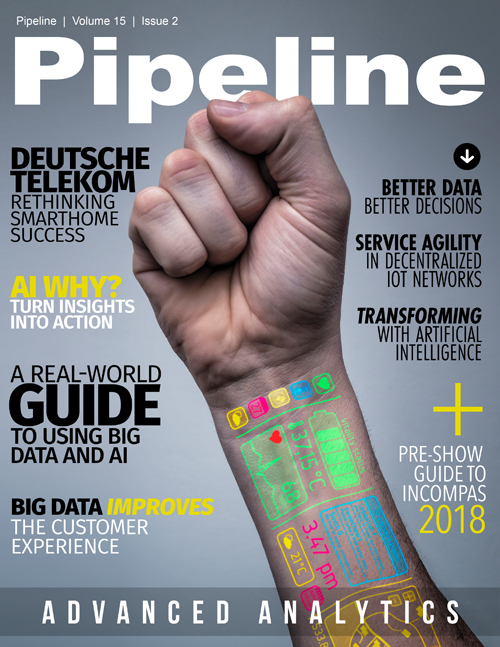AI Why? Turn Insights into Action by Being Data-Driven First
By: Robert Hingston
 The goals of increasing sales and service delivery efficiency and effectiveness have never been more important for digital service providers, media, and high‐tech companies. The ever-shifting
market demands of the digital economy require extreme business agility to attract customers, keep them happy, and run profitable businesses.
The goals of increasing sales and service delivery efficiency and effectiveness have never been more important for digital service providers, media, and high‐tech companies. The ever-shifting
market demands of the digital economy require extreme business agility to attract customers, keep them happy, and run profitable businesses.
To achieve these goals, many vendors and service providers are looking at artificial intelligence (AI) to save the day. While AI may indeed be the savior, there’s a real danger in putting too much faith in AI, given that the technology is still relatively immature and may be entirely impractical or inappropriate for the problem it is trying to solve.
You might say, with minds and money pouring in at an incredible rate, that AI has arrived as mainstream. Prior to the current hotbed of activity, the hot topic was big data. Several times over, service providers would ask whether we at Sigma Systems had big data solutions. Now—you guessed it—they ask if we have an AI solution. Rather than focusing on AI or big data in an either/or, however, the real question should center on what problem you are trying to solve and how AI as a technology base will help solve it. Relevance and use case are the important things, and—more importantly, in my experience—organizations need to ensure as a starting point that they are data-driven.
With each new emergent technology cycle, there are always revolutionary solutions being promoted and sold (whether they fit or not) to service providers. Similarly, service providers ask for solutions (and sometimes not the right ones), getting caught up in the hype-cycle and the promise of new technologies, approaches, and the problems they will solve. This is not a new development—in fact it’s an old story.
Frankly speaking, service providers (among many others) are asking for AI solutions because everyone believes AI is the future. However, they’re asking big, generic questions and too often they’re getting responses that over-promise potential results. There is much naivety and limited understanding surrounding these technologies, what their value is and how best to utilize them.
To mitigate the misconceptions and naivety that surround AI, it is important to define exactly what AI is. By definition, AI is the theory and development of computer systems that can perform tasks that normally require human intelligence. These include, but are not limited to, tasks such as visual perception, speech recognition, decision-making and translation between languages.
AI is often mentioned in the same breath as machine learning, but the two are distinct technologies. Machine learning is accurately defined as a method of data analysis that automates analytical model-building. It is a branch of AI based on the idea that systems can learn from data, identify patterns and make decisions with minimal human intervention.
This distinction is an important one, and several vendors have attached themselves to the market appeal of AI through branding, not product functionality, in the hopes of taking advantage of current and future market demand. Moreover, while service providers and vendors ramp up discussions around AI, just years after big data was on everyone’s mind, service providers are still challenged by the notion of what data they care about, and how data becomes meaningful when it’s brought together.





















